Ties that Bind: The Role of American Railroads in Expanding and Connecting Vast Territories

The political question of internal improvements challenged lawmakers in the earlier days of the United States with the majority supporting the federal government taking an active role in the construction of roads, canals, and railroads. This view prevailed. Many schemes were put forward to construct railways that would connect canals and other waterways.
In 1829, W.C. Redfield published a pamphlet proposing a route that would establish connections among New York, Pennsylvania, Ohio, Indiana, Illinois, Missouri, and several territories.
The construction of a Great Western Railway...is recommended to the attentive consideration of every citizen who feels an interest in the prosperity of his country, and wishes to promote its rapid advancement in wealth and power, by the multiplication of those physical resources which constitute national greatness, and best promote individual happiness and prosperity.
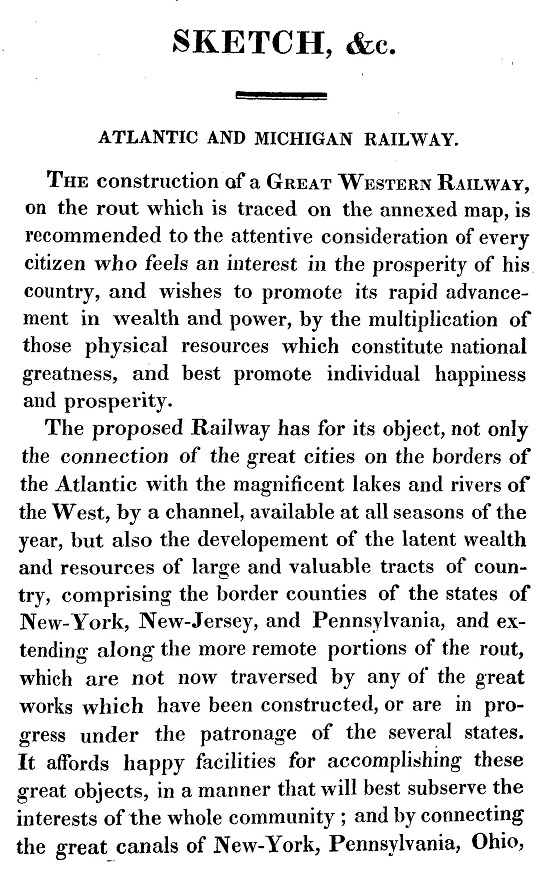
By the 1830s railroads were being proposed and constructed rapidly. Many of these were of limited scope but funded variously by regional commercial and civic interests or the War Department which had a sustaining interest in the nation’s defense infrastructure.
In obedience to the direction of the resolution of the House of Representatives...I have the honor to transmit, herewith, a copy of Major Bache's report of the preliminary survey of the route for a railroad from Williamsport, Pennsylvania, to Elmira, New York.
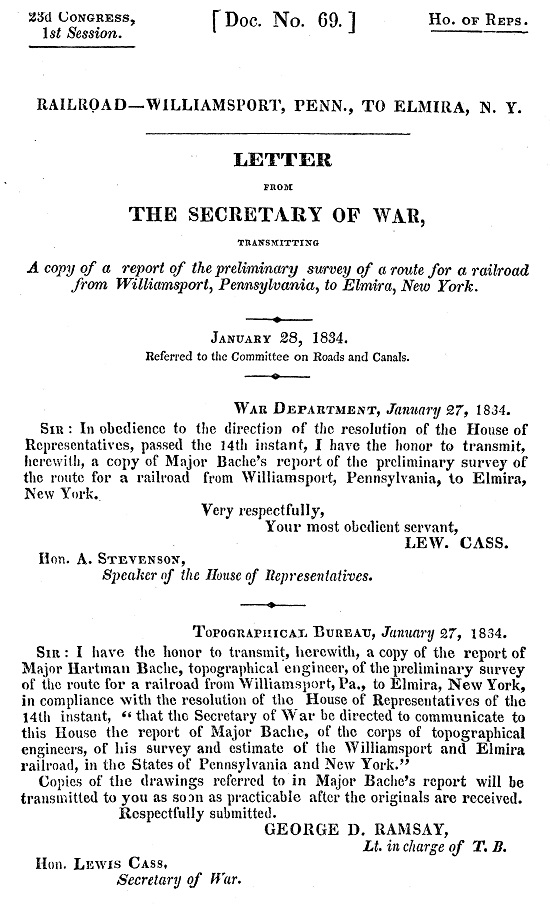
When the Norwich (Connecticut) and Worcester Railroad was established in 1835, the town of Norwich pulled out all the stops to mark the occasion as an event of immense civic pride.
Citizens generally are invited to assemble at the same hour, in front of the Court House, and to join the Procession....The procession will...march to Greenville, where the ceremonies of commencing the Norwich and Worcester Rail Road will take place....Arrangements will be made to accommodate the Ladies, and some of the Marshals will be designated to direct them to the places provided for them.
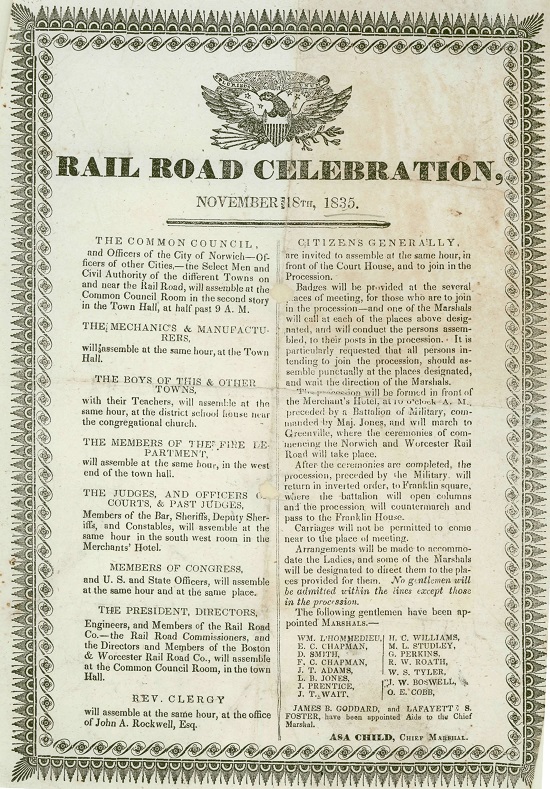
Inventors developed plans for both enhanced steam locomotives and railroad carriages. A broadside published by a Mr. Morgan of Stockbridge, Massachusetts, lauded him for his new carriage which is referred to as a Land Barge and is promised to be as comfortable and convenient as the best steamboats: “It is constructed with a cabin, births [sic], &c. below; a promenade deck, awning, seats, &c. above.” It does not seem to have ever been realized. The illustration may suggest why.
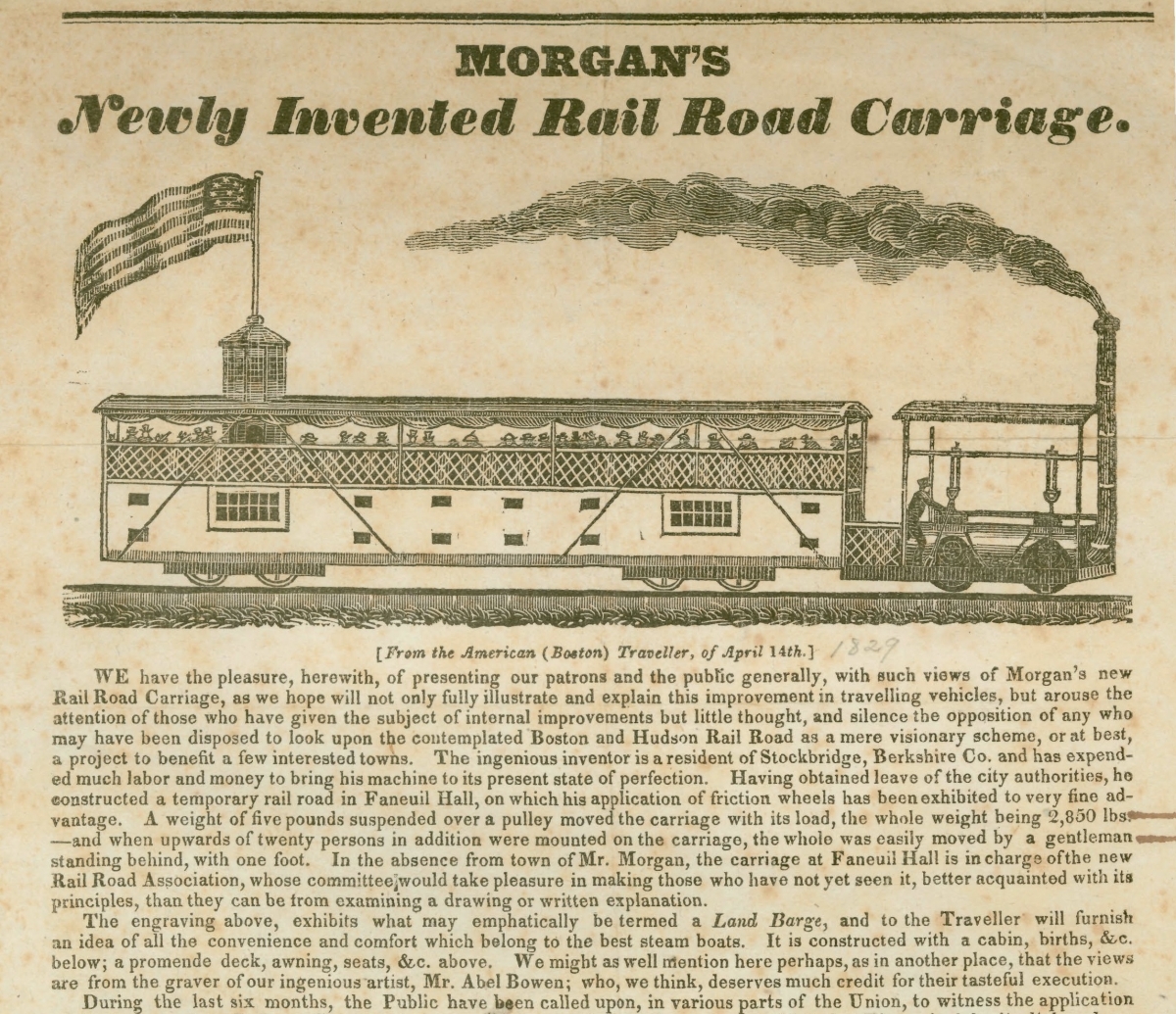
In contrast to this behemoth, the Mohawk and Hudson Rail Road was running trains typical of the earlier years which were engines pulling a series of coaches, complete with coachmen, mounted on steel wheels.
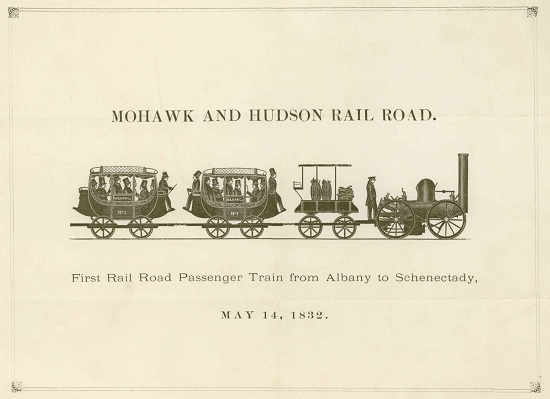
By 1844 the passenger cars had evolved to look less like horse coaches and more like cars designed specifically for train travel. Gone were the coachmen.
The Fare on this Line shall be as low, on all occasions, as any other on the road; the accomodations of the first order—and Agents careful and accomodating, that will spare no pains to serve and please the public.
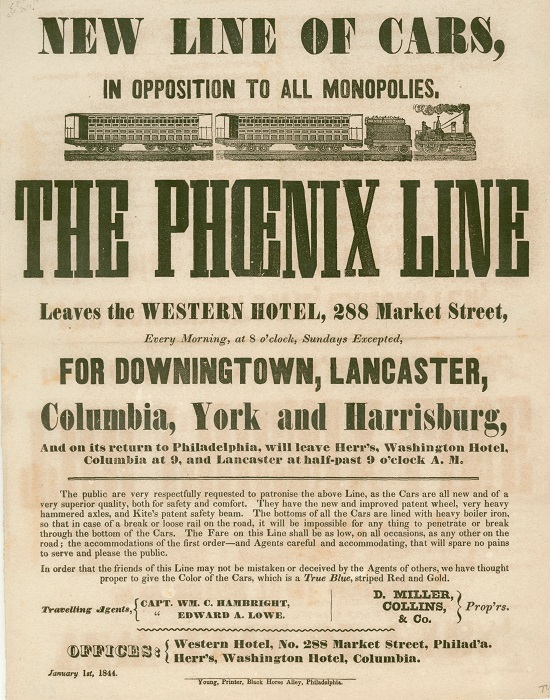
Steam had become the essential power for boats of many kinds. There were explosions and fatalities which stimulated inventors to keep improving the engines and make them safer. Congress received many memorials concerning improvements such as a petition from A.B. Quinby seeking funds to test his inventions.
The plans I offer for your consideration have been examined by several professors of chemistry, natural philosophy, and mechanics, and by Eli Whitney Blake, Esq., superintendant of the gun manufactory near New Haven, Connecticut....In the statement from Dr. Thomas P. Jones...the author remarks: "I am perfectly convinced that steam-boilers, of the necessary strength, do not explode, excepting when the water is too low, or the temperature too high..."
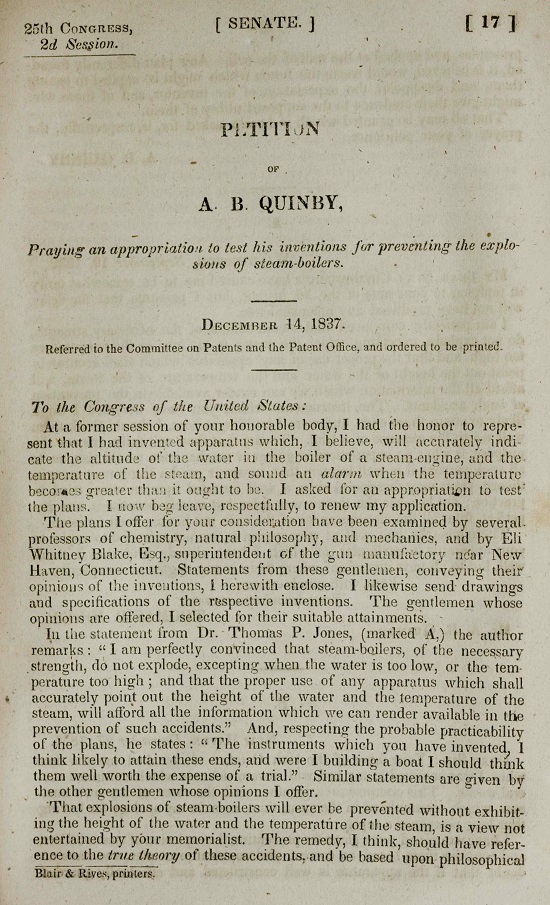
In 1842 a member of Congress submitted a copy of a pamphlet issued by the renowned steam engine inventor James Rumsey in 1787.
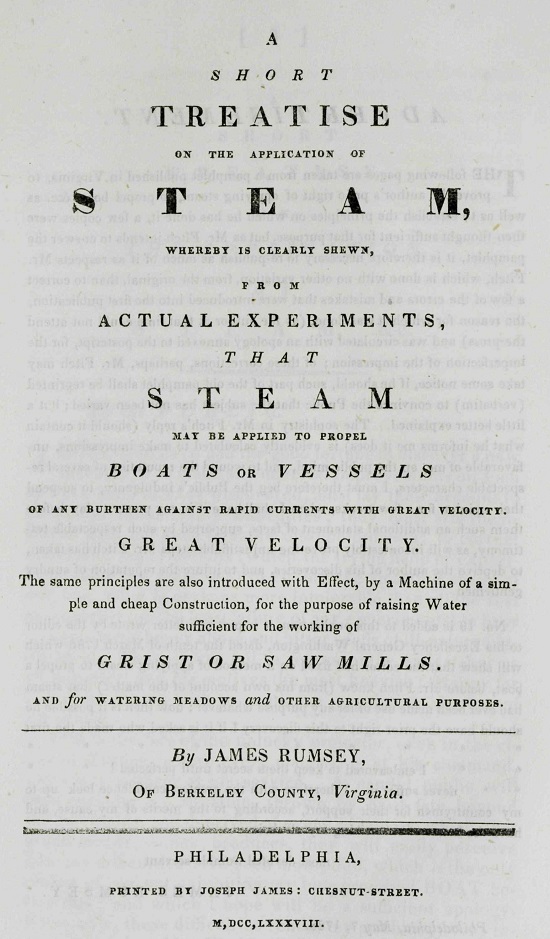
While steamboat explosions seem to have been more common than locomotive explosions, there were indeed a sufficiency of the latter as reviewed in the Springfield Republican of Massachusetts in 1907.
It is only when such an accident as that at Chester last Sunday morning, when three men were terribly injured by the explosion of a locomotive boiler, comes suddenly as a bolt from the sky that the general public awakes to the realization of the wonderful growth in size and power of engines that has come within the past few years. And it is only one of the older residents who can remember the puny wood-burning locomotives of half a century ago, spouting flames and showers of sparks from flaring smoke-stacks, shaped like funnels, that can appreciate to the full the greatness of the growth.
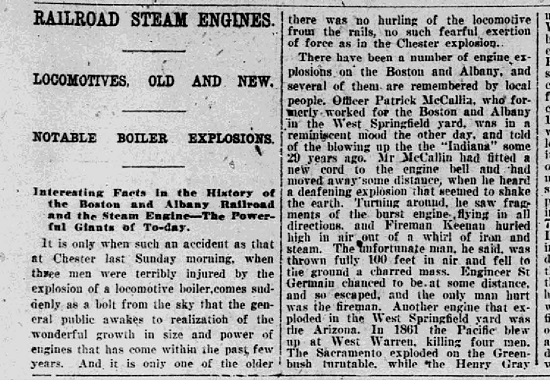
The expansion of railroads throughout the country, even during the Civil War, speaks to the impulsion of 19th-century Americans to bind the nation economically, socially, and politically post bellum. By 1887 the benefit of the federal government’s role was summed up in a memorial to Congress from Jacob D. Felthousen of Chicago “praying for…the construction of a national railroad.” He begins by quoting the Constitution. His memorial provides statistical information on the federal contributions to the railroads and provides a concise history of the issue of internal improvements. He lays out his arguments and concisely sums them up: “Trade wants the Railroad.”
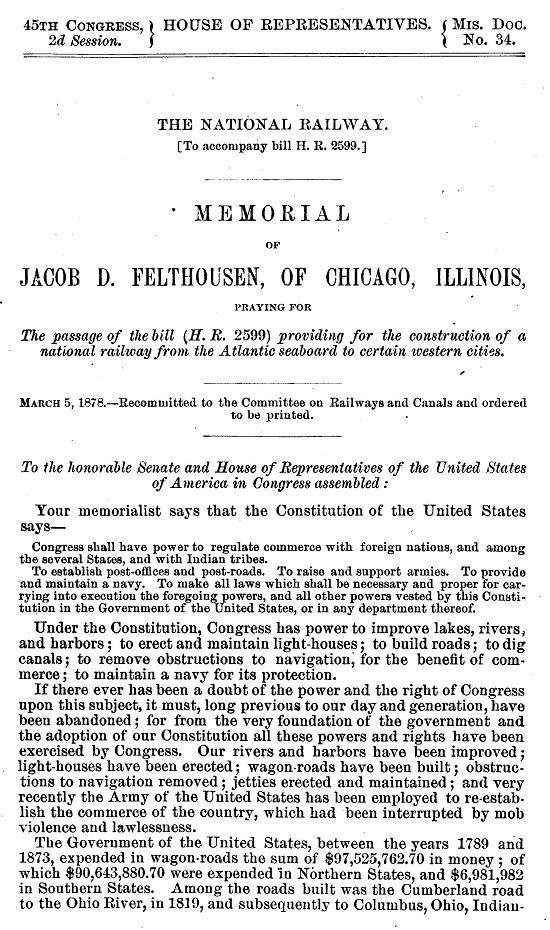
There had been earlier, more expansive concepts for binding the nation through infrastructure. In 1850 Senator Thomas Hart Benton of Missouri promoted the idea of one “great Central National Highway from St. Louis, on the Mississippi, to the Bay of San Francisco, on the Pacific ocean [sic]…” He argued for its geographical centrality and for the breadth of the concept, which proposed the highway be
...national in its form and use, consisting not of a single road adapted to a single kind of transportation, but of a system of roads adapted to all kinds of travelling, and of all kinds of carrying, free from monopoly and private interests, and free from tolls. It proposes a railroad and a common road, to be begun at once...
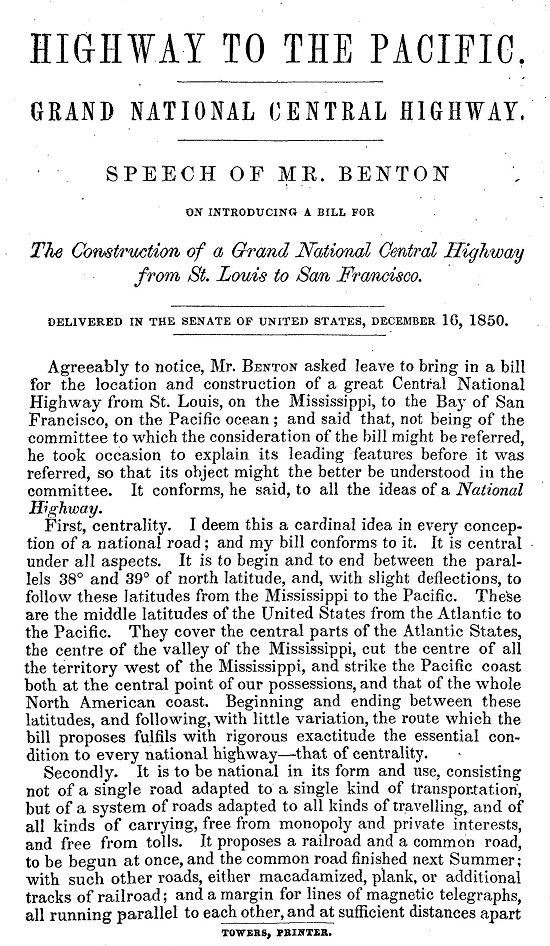
We have touched lightly on the confluence of infrastructure, invention, steam, commerce, and national expansion. Amid all of the local and regional development and construction of new and expanded rail lines there emerged a determination to connect the two major coasts of the nation and to bind every region to the other regions and every great American city to the other cities.
For more information about Readex digital products, please contact Readex.



